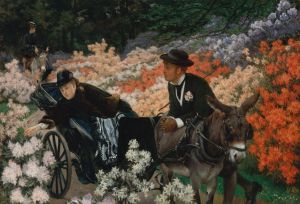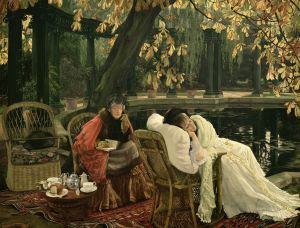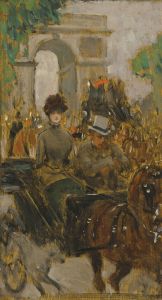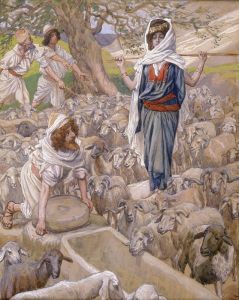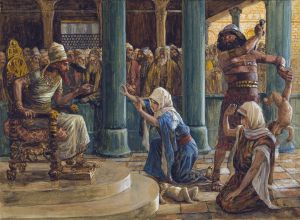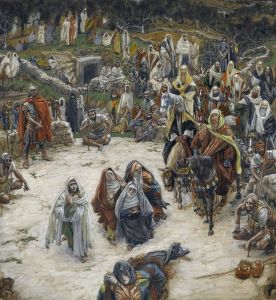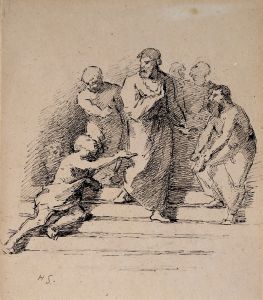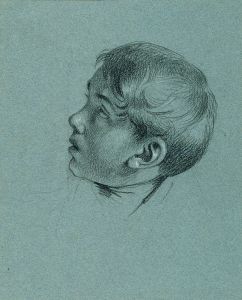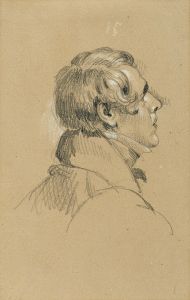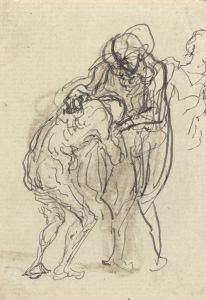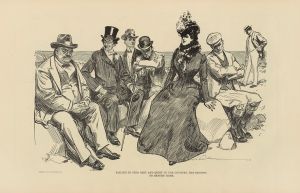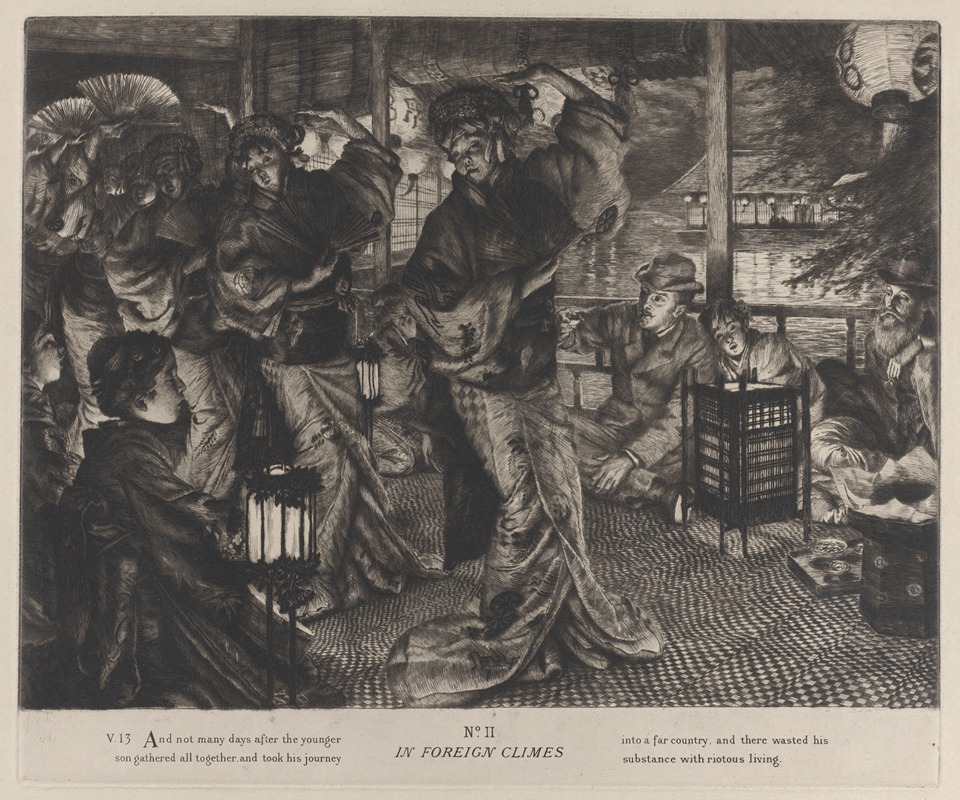
The Parable of the Prodigal Son, No. II; In Foreign Climes
A hand-painted replica of James Tissot’s masterpiece The Parable of the Prodigal Son, No. II; In Foreign Climes, meticulously crafted by professional artists to capture the true essence of the original. Each piece is created with museum-quality canvas and rare mineral pigments, carefully painted by experienced artists with delicate brushstrokes and rich, layered colors to perfectly recreate the texture of the original artwork. Unlike machine-printed reproductions, this hand-painted version brings the painting to life, infused with the artist’s emotions and skill in every stroke. Whether for personal collection or home decoration, it instantly elevates the artistic atmosphere of any space.
James Tissot's painting "The Parable of the Prodigal Son, No. II; In Foreign Climes" is part of a series that illustrates the biblical parable of the Prodigal Son, a story from the Gospel of Luke in the New Testament. This parable is one of the most well-known teachings of Jesus, emphasizing themes of repentance, forgiveness, and redemption.
James Tissot, a French painter and illustrator, was known for his detailed and narrative style, often focusing on biblical themes later in his career. Born in 1836, Tissot initially gained recognition for his depictions of contemporary life in Paris and London. However, after a spiritual awakening in the late 1880s, he dedicated much of his work to illustrating scenes from the Bible. His series on the Prodigal Son is a testament to this shift in focus.
"The Parable of the Prodigal Son, No. II; In Foreign Climes" captures the moment when the younger son, having left his father's house, squanders his inheritance in a distant land. Tissot's interpretation of this scene is notable for its attention to detail and the emotional depth it conveys. The painting likely depicts the son amidst a foreign setting, surrounded by the trappings of his indulgent lifestyle. Tissot's use of color and composition would have been intended to highlight the contrast between the son's temporary pleasures and the inevitable consequences of his actions.
Tissot's series on the Prodigal Son is characterized by its narrative clarity and emotional resonance. Each painting in the series serves to illustrate a different part of the parable, allowing viewers to follow the story visually. Tissot's ability to convey complex themes through his art is evident in this series, as he captures both the external actions and internal struggles of the characters.
The parable itself is a powerful story of a father's unconditional love and forgiveness. After squandering his wealth, the prodigal son eventually returns home, repentant and humbled. His father welcomes him back with open arms, symbolizing divine forgiveness and the joy of reconciliation. Tissot's work on this subject reflects his deep engagement with the spiritual and moral lessons of the Bible.
Tissot's biblical illustrations, including "The Parable of the Prodigal Son, No. II; In Foreign Climes," were part of a larger project that culminated in the publication of "The Life of Our Lord Jesus Christ," a series of 350 watercolors depicting the life of Christ. This work was highly acclaimed for its meticulous research and historical accuracy, as Tissot traveled to the Middle East to study the landscapes and customs of the region.
Overall, Tissot's painting "The Parable of the Prodigal Son, No. II; In Foreign Climes" is a significant example of his later work, reflecting both his artistic skill and his deep religious conviction. Through this series, Tissot not only illustrated a beloved biblical story but also offered viewers a visual meditation on themes of repentance, forgiveness, and the enduring love of a father for his son.







